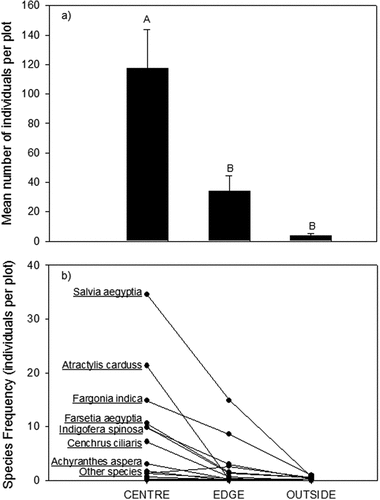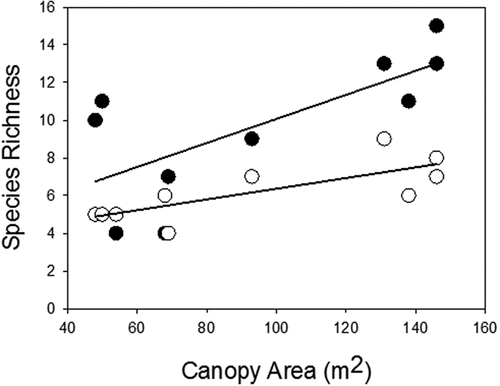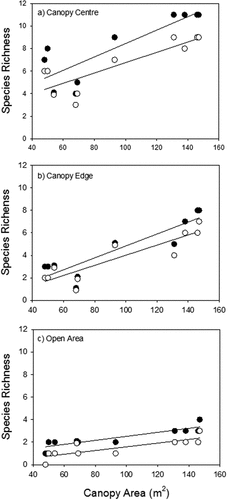Figures & data
Figure 1. A) The mean number (±SE) of individual seedlings across all species emerging from soil seed bank in three different microhabitats (center of canopy, the edge of canopy and outside of canopy). b) The mean frequency of each species emerging from the seed bank in each of the microhabitats. Species with the highest frequencies are labeled on the figure. The species with low frequency (labeled as other species) were: Senna italica (the species with relatively higher frequency in the edge microhabitat), Stipagrostis sp, Lycium shawii, Tribulus terrestris, commicarpus grandifloras, Dactyloctenium scindicum, Plantago sp, Launaea mucronata, and Aizon canariense.

Figure 2. The relationships between island area and species richness in the soil seed bank (●) (regression: n = 10, r2 = 0.5, p = 0.021), and adult plants in the standing vegetation (○) (regression: n = 10, r2 = 0.59, p = 0.01).

Table 1. Mixed model analysis of variance results on the impact of stage (seedlings and adults), and microhabitat (center of canopy, edge of canopy, and open) as fixed factors, and area as random factor on plant richness.
Figure 3. The relationships between island area and species richness in soil seed bank (●) and adult plants in the standing vegetation (○) in the three microhabitats along changes in the area of islands: a) at the canopy center (seedlings: n = 10, r2 = 0.71, p = 0.002; adults: n = 10, r2 = 0.70, p = 0.002); b) at the canopy edge (seedlings: n = 10, r2 = 0.80, p = 0.001; adults: n = 10, r2 = 0.78, p = 0.001); and c) outside the canopy (seedlings: n = 10, r2 = 0.79, p = 0.001; adults: n = 10, r2 = 0.60, p = 0.005).

